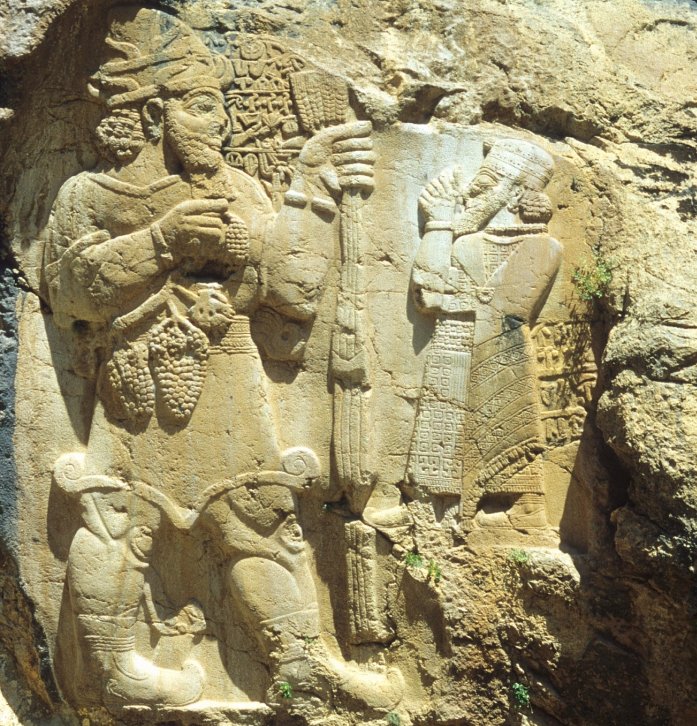Ivriz Relief: 3,000-Year-Old Hittite Relief – Oldest Known Symbol Of Agricultural Fertility In History
Conny Waters - AncientPages.com - The Ivriz relief is a Hittite rock relief in south-central Anatolia, located in the town of Aydinkent (Konya), formerly called Ivriz (modern Turkey).
The 3,000-year-old relief - the Hittite symbol that represented agricultural fertility - is on a rock face near the source of the Ivriz Suyu, whose water largely damaged it, with the passage of time.
Ivriz Relief: King Warpalawas (right) before the god Tarhunzas. source
This ancient Hittite piece of art measures 4.2 m high by 2.4 m wide and depicts the late 8th-century BC king Warpalawas of Tuwana (ca 730-710 BC?) Late Hittite (or Neo-Hittite) king ) who stands on a stone platform with his hands raised in a gesture of greeting or worship.
He is accompanied by the storm-god Tarhunzas (on the left)and is accompanied by a hieroglyphic Luwian inscription, which was first discovered during the 19th century and was defined as Hittite.
Ripe ears of corn and grape clusters (the symbol of the fertile lands of Konya) in his hands indicate that he brings about fertility. A sickle at his hip on the other hand, symbolizes the time immediately before the harvest. In front of the god's face and behind the king's back are three lines of inscription in Luwian hieroglyphs, naming both figures.
Another inscription at the base of the rock-face was probably two lines long, but it is largely damaged.
Mentioned by several literary sources centuries ago, the relief was built in the late Hittite period.
According to professor Hasan Bahar from Selçuk University, Konya Basin, which is surrounded by Hittite monuments, it was an important location for the Hittites as they heavily relied on wheat, and Konya was in a way their 'wheat silo.
In 1986, two valuable discoveries were made in form of a fragment of a stele of Tarhunzas, with a bilingual inscription in Luwian hieroglyphs and Phoenician saying that it was erected by the king Warpalawas and part of the head of a large statue, which probably also depicted Tarhunzas.
The finds led archaeologists to believe that place was a wealthy sanctuary of the storm-god Tarhunzas patronized by Warpalawas. Also another relief, approximately the same size, which appears to be a replication of the İvriz relief, was discovered in the mountain at Ambar Deresi, in the ruins of a Byzantine abbey, near Kizlar Sarayi. This relief is less detailed, has no inscription and probably was never finished.
Written by Conny Waters - AncientPages.com Staff Writer
Expand for referencesReferences:
Darke D. Eastern Turkey
Selim Kapur, Erhan Akça, Hikmet Günal,The Soils of Turkey
More From Ancient Pages
-
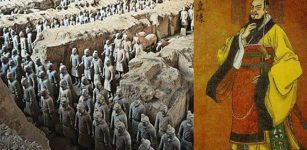 Mysterious History Of Qin Shi Huang – First Emperor Of China
Featured Stories | Jan 17, 2016
Mysterious History Of Qin Shi Huang – First Emperor Of China
Featured Stories | Jan 17, 2016 -
 Neglected Ancient Artifacts That Could Re-Write History – Evidence Of Surprising Advanced Ancient Technology That Shouldn’t Exist
Artifacts | Feb 19, 2019
Neglected Ancient Artifacts That Could Re-Write History – Evidence Of Surprising Advanced Ancient Technology That Shouldn’t Exist
Artifacts | Feb 19, 2019 -
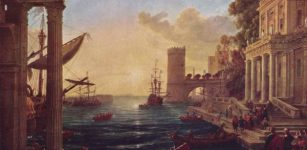 Quest For Legendary Ophir – The Biblical El Dorado
Biblical Mysteries | Dec 16, 2016
Quest For Legendary Ophir – The Biblical El Dorado
Biblical Mysteries | Dec 16, 2016 -
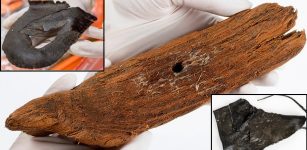 Ancient Wooden Toy Boat And Ancient Shoes That Dates Back To The Reign Of King St. Olav – Found
Archaeology | Mar 1, 2017
Ancient Wooden Toy Boat And Ancient Shoes That Dates Back To The Reign Of King St. Olav – Found
Archaeology | Mar 1, 2017 -
 On This Day In History: Battle Of Langside Was Fought – On May 13, 1568
News | May 13, 2016
On This Day In History: Battle Of Langside Was Fought – On May 13, 1568
News | May 13, 2016 -
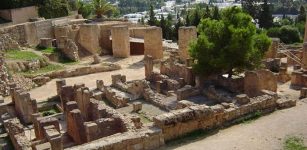 Carthage: Prosperous Phoenician Colony That Became Dominant Power In The Western Mediterranean
Featured Stories | May 21, 2020
Carthage: Prosperous Phoenician Colony That Became Dominant Power In The Western Mediterranean
Featured Stories | May 21, 2020 -
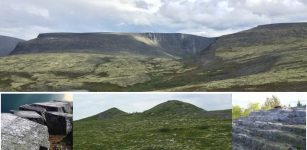 Mysterious Kola Pyramids Built By An Unknown Lost Ancient Civilization Can Rewrite Ancient History
Civilizations | Aug 3, 2020
Mysterious Kola Pyramids Built By An Unknown Lost Ancient Civilization Can Rewrite Ancient History
Civilizations | Aug 3, 2020 -
 Huge Unknown Ancient Lost World Discovered Inside Giant Sinkhole In China
News | May 19, 2022
Huge Unknown Ancient Lost World Discovered Inside Giant Sinkhole In China
News | May 19, 2022 -
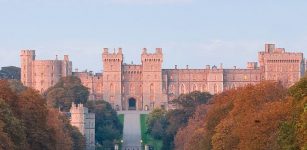 Where Does The Expression ‘Saved By A Bell’ Come From?
Ancient History Facts | Oct 16, 2019
Where Does The Expression ‘Saved By A Bell’ Come From?
Ancient History Facts | Oct 16, 2019 -
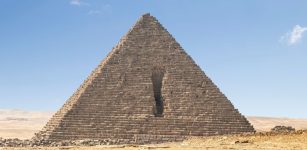 Mysterious Pyramid Of Menkaure Remains An Ancient Puzzle
Civilizations | Oct 8, 2022
Mysterious Pyramid Of Menkaure Remains An Ancient Puzzle
Civilizations | Oct 8, 2022 -
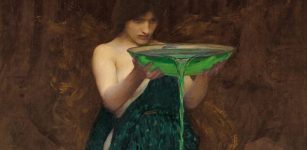 Circe: Powerful Divine Sorceress Who Mastered Healing, Miracles And Transforming People Into Animals In Greek Mythology
Featured Stories | Aug 12, 2023
Circe: Powerful Divine Sorceress Who Mastered Healing, Miracles And Transforming People Into Animals In Greek Mythology
Featured Stories | Aug 12, 2023 -
 Ancient Tomb Belonging To Princess Of Ancient Nomads Discovered In China
Archaeology | Dec 20, 2015
Ancient Tomb Belonging To Princess Of Ancient Nomads Discovered In China
Archaeology | Dec 20, 2015 -
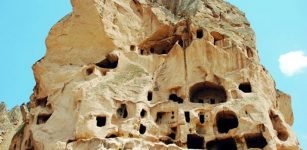 Cappadocia And Huge Unique Selime Cathedral
Featured Stories | Mar 19, 2019
Cappadocia And Huge Unique Selime Cathedral
Featured Stories | Mar 19, 2019 -
 Powerful Thunderbird Sent By The Gods To Protect Humans From Evil In Native American Legends
Featured Stories | Mar 26, 2017
Powerful Thunderbird Sent By The Gods To Protect Humans From Evil In Native American Legends
Featured Stories | Mar 26, 2017 -
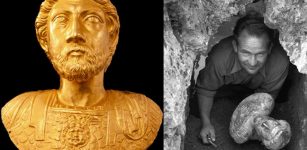 Extremely Rare Life-Size Gold Bust Of Emperor Marcus Aurelius On Display At Getty
Artifacts | May 24, 2023
Extremely Rare Life-Size Gold Bust Of Emperor Marcus Aurelius On Display At Getty
Artifacts | May 24, 2023 -
 Wonderful Long-Lived Nymphs In Greek And Roman Mythologies
Featured Stories | Mar 29, 2024
Wonderful Long-Lived Nymphs In Greek And Roman Mythologies
Featured Stories | Mar 29, 2024 -
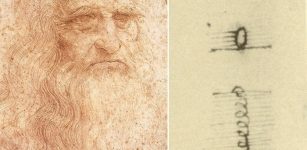 Leonardo da Vinci’s Paradox Cracked
Ancient Technology | Jan 19, 2023
Leonardo da Vinci’s Paradox Cracked
Ancient Technology | Jan 19, 2023 -
 Sargon Of Akkad – Prominent Leader Who Rose Out Of Obscurity
Featured Stories | Jun 7, 2019
Sargon Of Akkad – Prominent Leader Who Rose Out Of Obscurity
Featured Stories | Jun 7, 2019 -
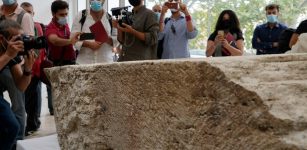 Rare Stone Showing Ancient Rome’s City Limits – Accidentally Found
Archaeology | Jul 18, 2021
Rare Stone Showing Ancient Rome’s City Limits – Accidentally Found
Archaeology | Jul 18, 2021 -
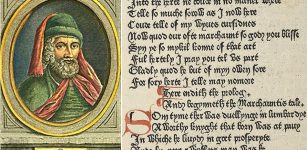 On This Day In History: William Caxton Printed His First Book – On Nov 18, 1477
News | Nov 18, 2016
On This Day In History: William Caxton Printed His First Book – On Nov 18, 1477
News | Nov 18, 2016

